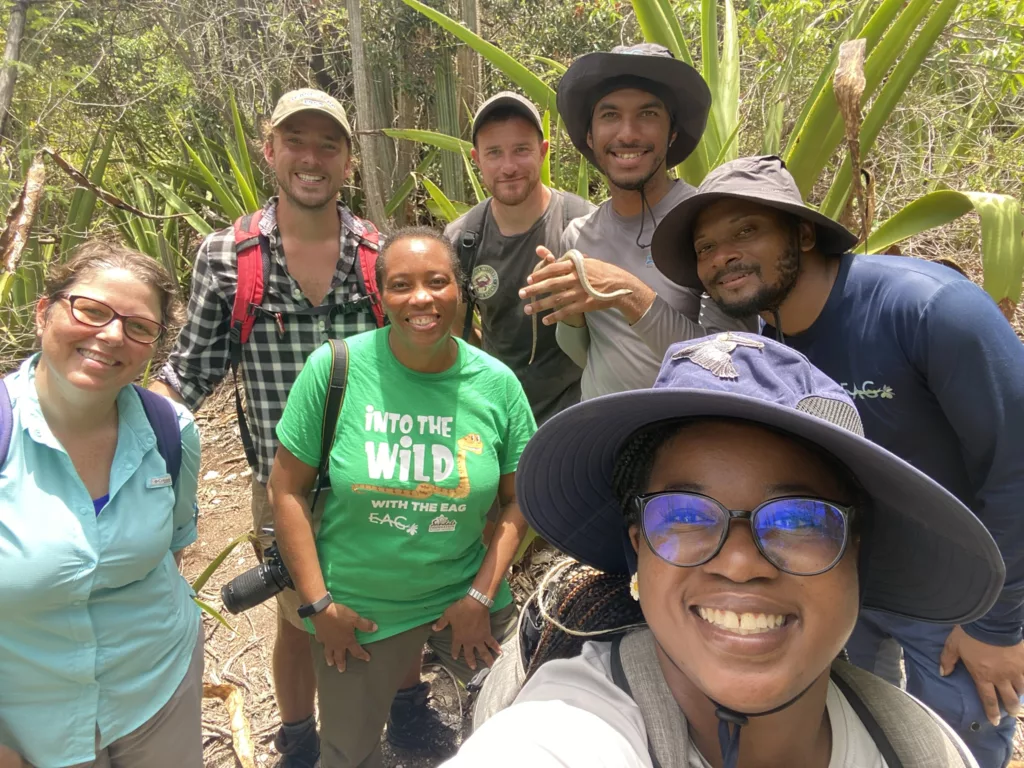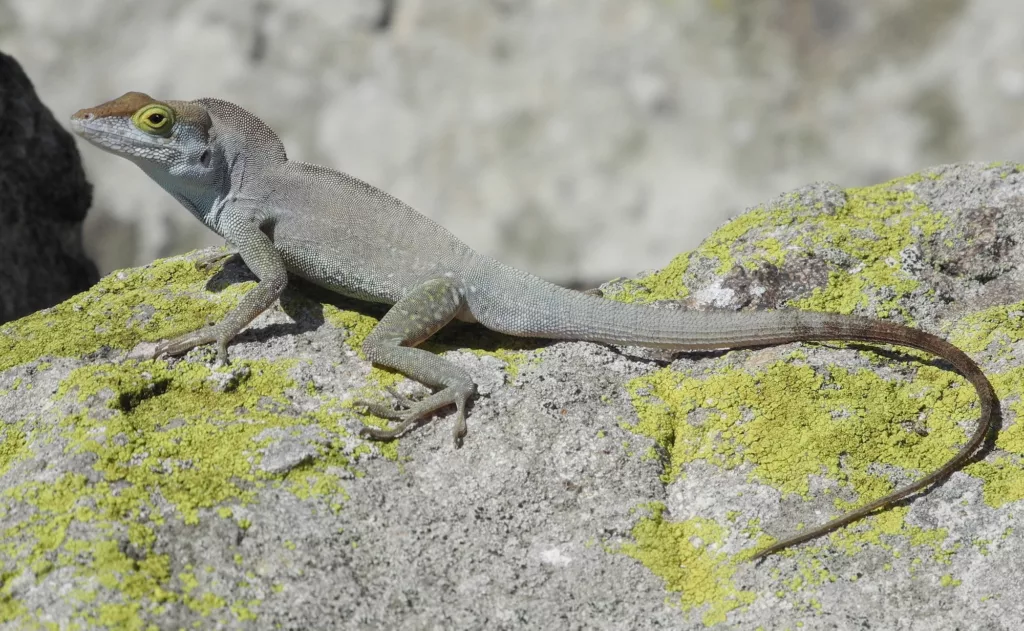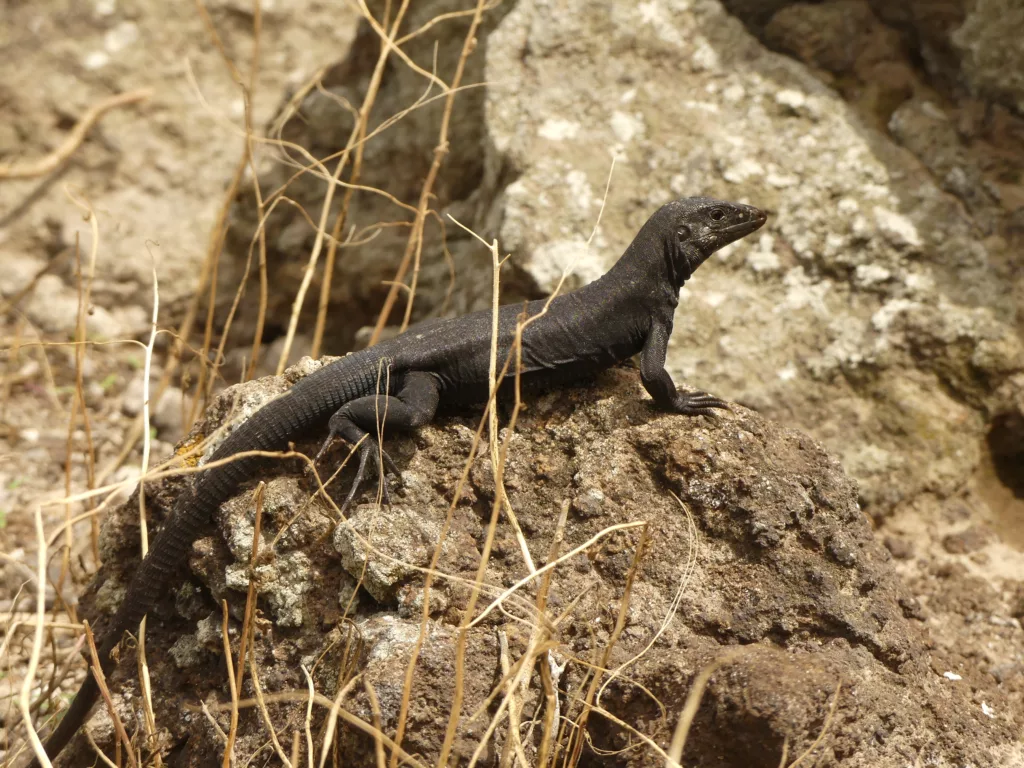By Joshel Wilson and Nathan Wilson, EAG
The population of a critically endangered snake that couldn’t be found anywhere else in the world but on one 8.4-hectare sized island a few kilometres off Antigua’s coast grew from 50 to over 1,200 and can now be found on four of Antigua, Barbuda, and Redonda’s offshore islands.
This is the story of the Antiguan Racer. On the other hand, an island once plagued by goats and infested with rats is now teeming with seabirds and hosts rapidly recovering populations of Redonda Ground Lizards, Redonda Anoles and Redonda Pygmy Geckos. As their names suggest, these three lizard species cannot be found anywhere else in the world but on Redonda. Their stories are undisputable testaments to the value of partnerships to achieve wildlife conservation goals.
For conservation-focused organisations like the Environmental Awareness Group (EAG), partnerships are very important, mandatory even, if we are to have a chance of succeeding with any of our goals. By collaborating, any gaps that an organisation may have can be filled.
After the rediscovery of the Antiguan Racer in 1993, the Antiguan Racer Conservation Project was formed as a partnership between the Forestry Unit, the EAG, Fauna and Flora International (FFI), Durrell Wildlife Conservation Trust, and Island Resources Foundation, with a commitment to save the snake from extinction. The project involved a combination of habitat restoration, invasive species control, captive breeding, and the reintroduction of snakes into the wild. The first step in the restoration programme was to establish a captive breeding programme for the Antiguan Racer. This involved collecting a small number of snakes from Great Bird Island and bringing them into captivity for breeding.




At the same time, efforts were made to remove some of the pressures that were threatening the Antiguan Racer’s habitat. Invasive rats, mice, mongooses, goats, and feral cats were eradicated or removed from the offshore islands. During this project, local conservationists received training in invasive species management and best practices for snake conservation, skills that continue to be indispensable to the work of conserving the Antiguan Racer and other native wildlife.
The EAG then possessed knowledge that it could pass on to other organisations that were facing similar conservation challenges. The EAG has engaged in training activities with colleagues from the Anguilla National Trust on Racer monitoring methods.
After a series of feasibility studies and consultations to save Redonda’s biodiversity and ecosystem from invasive species, in 2017, a partnership between the EAG, FFI, Department of Environment, British Mountaineering Council, and Wildlife Management International Ltd, eradicated the rats from the island and relocated the feral goats to Antigua. The relocation of the goats would not have been possible without the assistance of the transport company at the time, Caribbean Helicopters. The success of this wildlife conservation partnership is readily evident, with Redonda being transformed from a barren moonscape to a vegetation covered island that hosts thousands of seabirds, is home to 15 land bird species that have returned to the island and has had an eightfold increase in the Redonda Ground Lizard population, to list a few of the conservation wins we have witnessed.
We continue to build on the success of the original eradication work on Redonda and the other offshore islands. We are working on eradicating invasive plants, monitoring the very rapid recovery of native species, exploring the feasibility of reintroducing native species, conducting marine monitoring and surveillance, and establishing the Redonda Ecosystem Reserve, the upcoming protected area that will include the island, its surrounding seagrass beds, and a largely intact 180 km2 coral bank. Partnerships with organizations like the National Parks Authority are invaluable for completing marine-focused conservation work such as marine surveys and sea turtle monitoring. We are also poised to assist regional colleagues with support to conserve their native Racers, and through partnerships, we gain experience with protected area management.
With the right combination of interventions and collaborative efforts, even critically endangered species can recover and thrive. The restoration of the Antiguan Racer and the continued recovery of endemic lizard species and the return of bird populations on Redonda provide hope for the conservation of other endangered species and demonstrates that partnerships for wildlife conservation can have massive positive impacts.

